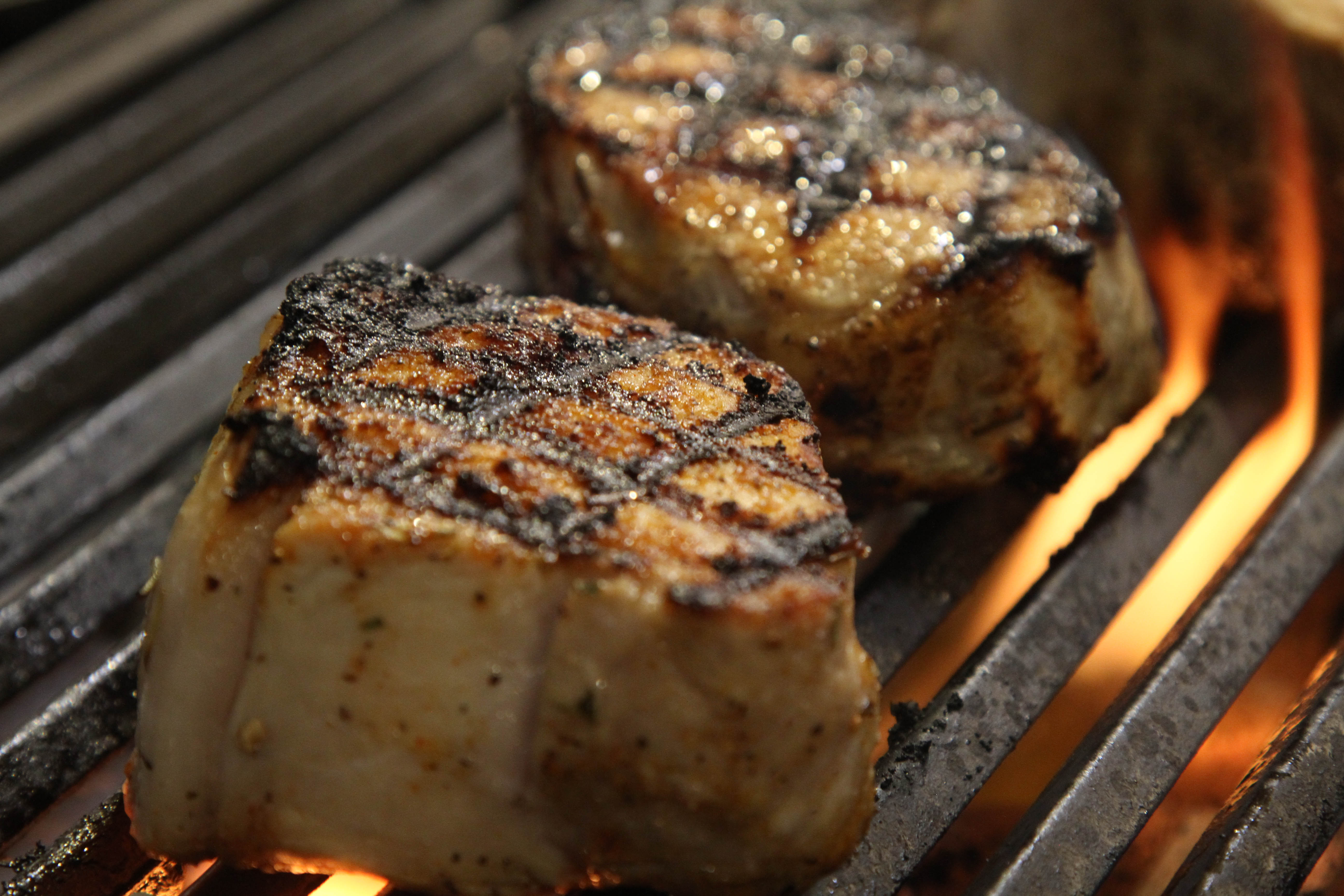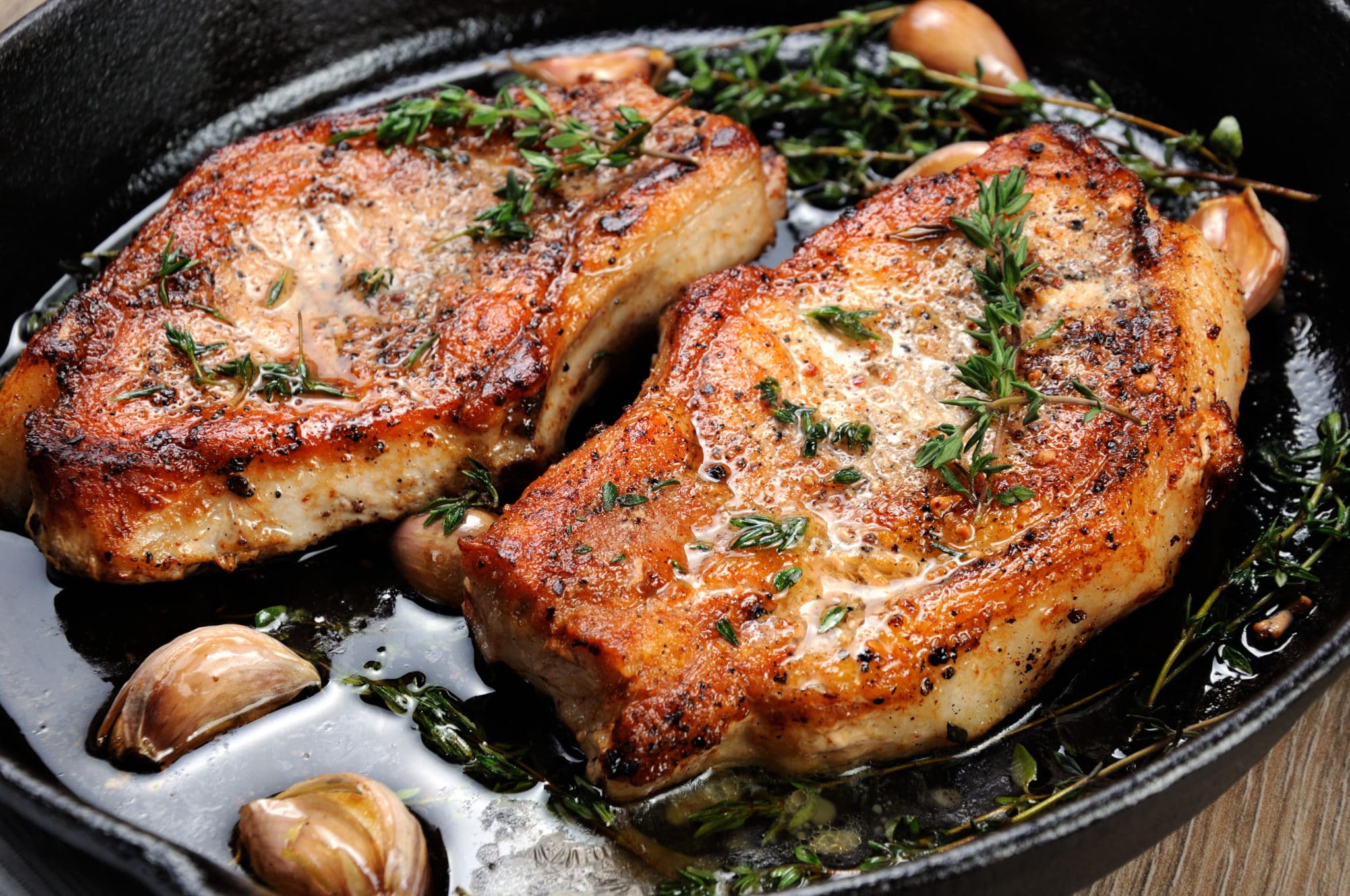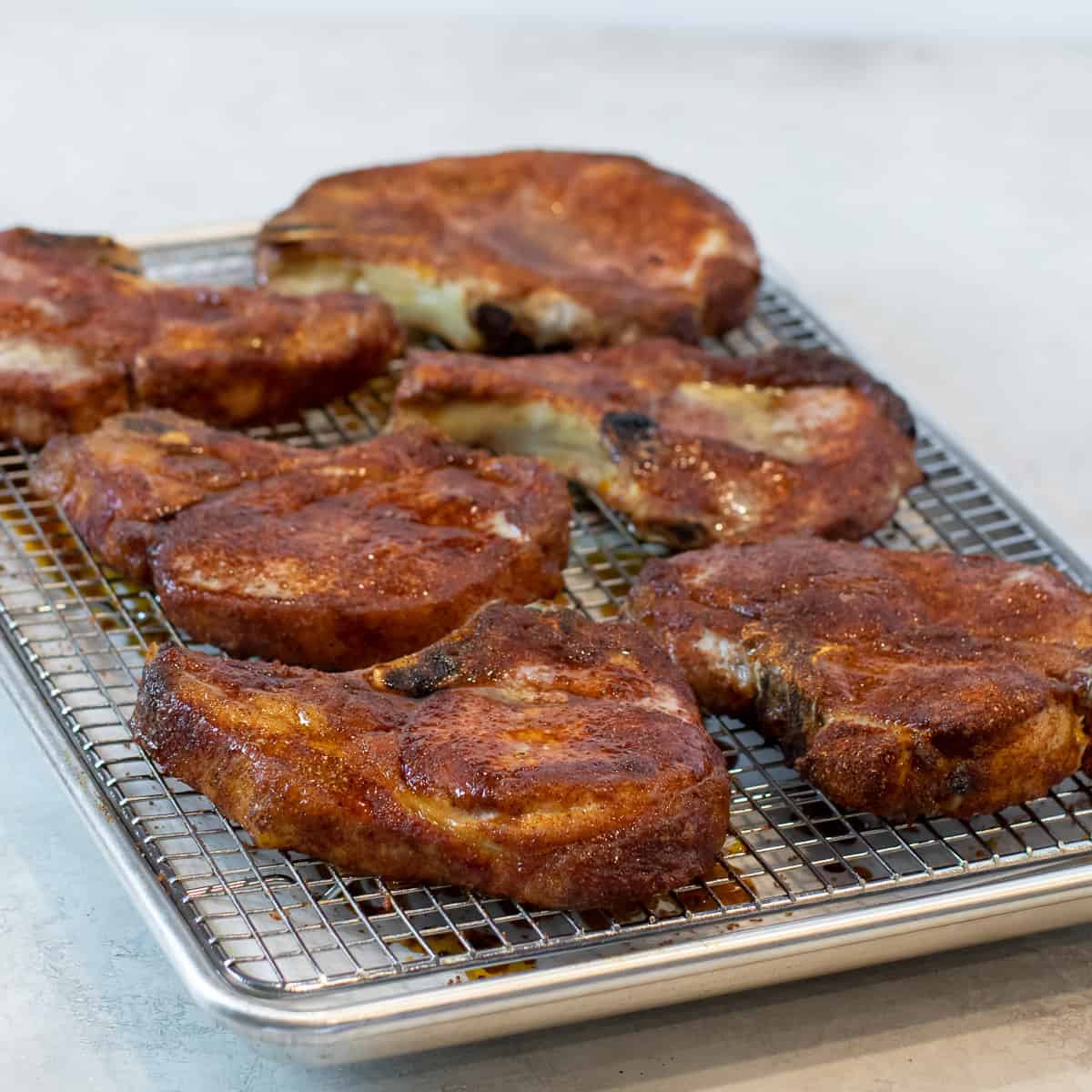Getting your pork chops just right can feel like a real kitchen puzzle, can't it? So, many folks want that perfect bite – meat that's soft and full of flavor, not dry or tough. It’s almost like there’s a secret to making them turn out great every time, and a big part of that secret is knowing the right heat level to cook them to.
You see, there’s a specific warmth inside the meat that makes all the difference. It’s not just about how long they sit on the grill or in the oven, but rather, what the little gadget says when you check the middle. This number tells you if your pork is ready to be enjoyed, keeping it safe to eat and tasting wonderful, you know?
This guide will walk you through everything about the best warmth for your pork chops. We’ll talk about what that perfect number is, how to measure it, and why it makes your meal so much better. Plus, we'll cover how different ways of cooking, like grilling or baking, still aim for that same sweet spot of warmth inside, basically.
Table of Contents
- What's the Ideal Temp for Pork Chops?
- Why Does the Temp for Pork Chops Matter So Much?
- How Do You Check the Temp for Pork Chops?
- Cooking Methods and Your Pork Chop Temp
- Grilling Your Pork Chop Temp
- Baking Your Pork Chop Temp
- What if My Pork Chop Temp is Too High?
- Resting Your Pork Chops for Better Temp Results
What's the Ideal Temp for Pork Chops?
For a good while, people thought pork needed to be cooked to a really high warmth, almost until it was quite dry. But, in fact, things have changed quite a bit over the past ten years or so, thanks to updated advice from food safety groups. So, that old idea of cooking pork until it was white and dry? You can mostly forget about that now, honestly.
The best warmth for your pork chops, no matter what part of the pig they come from – be it a regular chop, a big roast, or a slender tenderloin – is pretty much the same. You are looking for a warmth of 145 degrees Fahrenheit. This warmth is the sweet spot that makes sure your pork is safe to eat while keeping it wonderfully juicy and soft, too. It’s a bit of a balancing act, but completely worth it.
This warmth allows the pork to stay pinkish in the middle, which is perfectly fine and a sign of a chop that’s cooked just right, rather than overdone. It’s a significant shift from how many of us were taught to cook pork years ago. So, if you’ve been cooking yours until it’s super firm and not very moist, that’s probably why it wasn’t as pleasant to eat, you know?
- Grand Harbor In Dubuque Iowa
- Adity Mistry Nude
- Somali Wasmo Channel 2025
- Direct Cremation Enfield
- Aditi Mistry Onlyfans
Why Does the Temp for Pork Chops Matter So Much?
The warmth inside your pork chop isn't just about how it tastes; it’s also really important for keeping you well. If the meat isn't warmed enough, there's a chance of tiny, unwelcome guests growing inside it. On the flip side, if you let it get too warm, that lovely piece of meat can become something quite different – dry, hard to chew, and not very appealing, basically.
Think of it like this: there’s a happy medium. That 145-degree warmth is the point where any harmful things are taken care of, but the meat’s natural moisture and softness are kept safe. It’s a simple number that truly makes a big difference in the outcome of your meal. Knowing this number takes away a lot of the guesswork when you’re standing over the stove or grill, too.
Many home cooks really want to make perfect pork chops, and it’s actually a kind of art. Getting the warmth just right, along with the time it cooks, can turn a plain piece of meat into something truly delicious. It makes your taste buds happy, and that’s what we’re aiming for, isn't it? It’s pretty much the main thing to keep in mind.
How Do You Check the Temp for Pork Chops?
To really hit that perfect warmth for your pork chops, you can’t just guess. Feeling the meat or looking at its color from the outside isn't enough, you know? The most reliable way to know for sure is to use a special tool. This tool is a digital meat thermometer, and it’s pretty much your best friend in the kitchen for this task, honestly.
When you use one of these gadgets, you just push the thin metal stick into the thickest part of the meat. Be careful not to touch any bones, because bones hold heat differently and can give you a false reading. You want the number on the screen to settle at that magic 145 degrees. It’s a very quick and simple way to get an accurate reading, and it takes all the doubt out of cooking your pork, basically.
Having a thermometer means you don't have to cut into your pork chop to see if it's done, which can let out all the good juices. So, using this tool helps keep your meat juicy and soft. It’s a small step that makes a huge difference in how your pork chops turn out, and it’s nearly foolproof, you know? It's really the only way to be certain.
Cooking Methods and Your Pork Chop Temp
It doesn't really matter how you decide to cook your pork chops – whether they're sizzling on the grill, warming up in the oven, or getting a nice sear on the stovetop. The main goal for the warmth inside the meat stays exactly the same. That 145-degree mark is what you're always aiming for, no matter the cooking style. This is a pretty important point, you know?
Each cooking method brings its own special flavor and texture to the outside of the chop, but the inside needs to reach that specific warmth for safety and for the best eating experience. So, while you might adjust the heat of your oven or the time on your grill, the target warmth inside the pork chop doesn't change at all. It’s always that one number, actually.
Many people have found that cooking pork at a very high heat for too long makes it tough and dry. If that sounds like your past experiences, then you’ve probably just been cooking it too much. Knowing that the same warmth applies across the board helps you adjust your cooking habits to get better results, more or less every time.
Grilling Your Pork Chop Temp
Grilling pork chops gives them a wonderful smoky taste and those nice grill marks. When you're grilling, the outside gets very hot, very fast. This means you need to keep a close eye on the warmth inside. A probe thermometer, which stays in the meat while it cooks, can be really helpful here, as a matter of fact.
For grilled pork chops, you'll still be looking for that 145-degree warmth. The trick with grilling is that the outside can look perfectly done, even a bit charred, while the inside is still warming up. So, using your thermometer is extra important on the grill. It helps you pull them off at just the right moment, before they get too firm, you know?
Different kinds of pork chops, like thicker bone-in ones, might take a bit longer on the grill. The bone, you see, acts like a little blanket, slowing down how quickly the warmth gets to the middle of the meat. So, always make sure to put your thermometer in the meatiest part, away from the bone, to get a true reading of the temp for pork chops.
Baking Your Pork Chop Temp
Baking pork chops in the oven is a gentle way to cook them, often resulting in a very even warmth throughout the meat. This method is great for thicker chops or when you want a more hands-off approach. You still want to reach that 145-degree warmth, just like with grilling, you know?
The oven provides a steady warmth all around the pork chop, which can make it a bit easier to control the final internal warmth. However, it's still very important to use your digital thermometer. Even in the oven, chops can dry out if left in for too long, past their ideal warmth. So, keep that gadget handy, basically.
Many recipes might give you a time to bake, but those are just rough ideas. The actual time needed can change based on how thick your chops are, how warm your oven really is, and even the starting warmth of your meat. That’s why cooking by the internal warmth is always the best way to go, nearly every time.
What if My Pork Chop Temp is Too High?
So, what happens if you accidentally let your pork chops get too warm? Well, the main thing is that they will likely become less pleasant to eat. That soft, juicy texture you’re aiming for will start to disappear, replaced by something much firmer and not as moist. It’s a common issue, you know, and one that’s easy to fix once you know the ideal warmth.
When the warmth inside the meat goes much higher than 145 degrees, the muscle fibers in the pork start to tighten up too much. This squeezing action pushes out all the natural juices, leaving the meat dry and sometimes a bit stringy. It's why that specific warmth is so important for keeping the meat enjoyable, basically.
If you’ve often found your pork chops to be a bit like shoe leather, it’s probably because they were cooked to a warmth that was too high. The good news is that with a thermometer and a bit of practice aiming for that 145-degree mark, you can easily avoid this problem in the future. It’s pretty much a simple fix, you know?
Resting Your Pork Chops for Better Temp Results
Once your pork chop hits that 145-degree warmth, your job isn't quite done yet. There's one more really important step that many people skip, and it makes a huge difference in how juicy and soft your pork turns out. This step is letting the meat rest after you take it off the heat, you know?
When meat cooks, all the juices get pushed to the center by the heat. If you cut into the chop right away, those juices will just run out onto your cutting board, leaving the meat itself less moist. Letting the pork chop sit for a few minutes, maybe five to ten, allows those juices to settle back
Related Resources:



Detail Author:
- Name : Damian Hermann
- Username : torp.seamus
- Email : timmothy63@yahoo.com
- Birthdate : 2007-04-23
- Address : 9237 Rocky Junctions Apt. 719 East Rebeccaville, MA 36694-3153
- Phone : (303) 983-9238
- Company : Kertzmann, Jacobi and Abernathy
- Job : Fire Fighter
- Bio : Aut animi et est minima non quo maxime. Quia porro harum nemo repudiandae est cumque. Exercitationem deserunt eveniet est voluptas dignissimos. Praesentium delectus cupiditate ipsam eum eum sint.
Socials
twitter:
- url : https://twitter.com/jerel.doyle
- username : jerel.doyle
- bio : Minus soluta et eos consequuntur tenetur quis quae. Eum asperiores occaecati ratione commodi natus ut odit. Fuga qui minus unde necessitatibus aut aspernatur.
- followers : 3183
- following : 1190
instagram:
- url : https://instagram.com/jerel_id
- username : jerel_id
- bio : Inventore veniam totam magni omnis. Ut nihil inventore omnis veniam cupiditate. Ab aut et quod est.
- followers : 6673
- following : 1818
facebook:
- url : https://facebook.com/jereldoyle
- username : jereldoyle
- bio : Earum explicabo in nostrum modi vel quis.
- followers : 4229
- following : 1164
linkedin:
- url : https://linkedin.com/in/jereldoyle
- username : jereldoyle
- bio : Incidunt dolorem autem error architecto aut.
- followers : 1781
- following : 1351